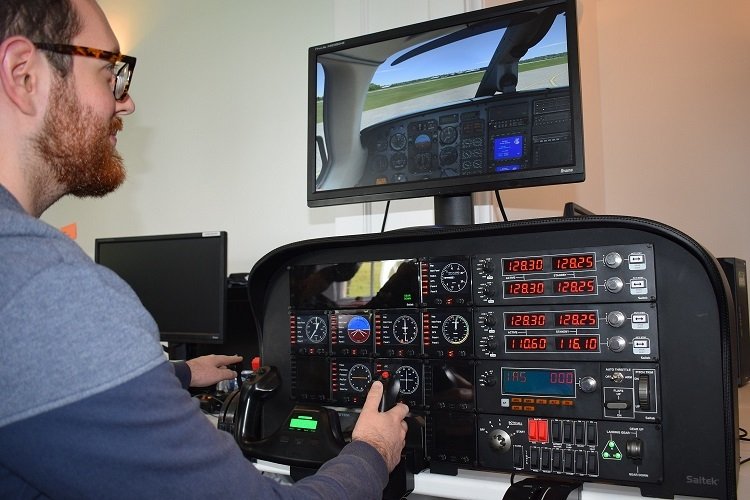A home flight simulator is a setup that allows aviation enthusiasts, hobbyist pilots, and gamers to experience the thrill and realism of flying an aircraft from the comfort of their own homes. These simulators recreate the cockpit environment and flight dynamics of various aircraft, providing an immersive flight experience.
Benefits of a Home Flight Simulator:
- Realistic Experience: Home flight simulators offer a realistic experience, providing users with the opportunity to practice flying procedures, explore different aircraft models, and improve their piloting skills.
- Cost-effective Training: Flight training can be expensive. A home flight simulator allows aspiring pilots to practice flight maneuvers, navigation, and emergency procedures at a fraction of the cost of real flight hours.
- Convenience and Accessibility: Having a flight simulator at home provides convenience and accessibility. Users can fly anytime without the need to travel to an airport or training facility.
- Entertainment and Recreation: Home flight simulators also serve as a source of entertainment and recreation for aviation enthusiasts and gamers who enjoy the experience of flying without the need for formal training.
- Community and Online Connectivity: Many flight simulator software packages offer online connectivity, allowing users to connect with a community of flight simulator enthusiasts, participate in multiplayer flights, and share experiences and knowledge.
Several types of home flight simulators available, ranging from basic setups to more advanced and realistic configurations.
- Virtual Reality (VR) Flight Sims
Virtual Reality (VR) flight simulators provide an immersive and highly realistic experience. Users wear VR headsets that transport them into a 360-degree virtual environment, allowing them to look around the cockpit and interact with controls and instruments. VR flight sims offer an enhanced sense of depth and immersion, making it feel like you are actually inside the aircraft. - Replica Cockpit Simulators
These simulators aim to replicate the cockpit of a specific aircraft, providing an even more authentic experience. They often feature physical replicas of aircraft controls, instrument panels, and even cockpit enclosures. Some enthusiasts go to great lengths to build exact replicas of specific aircraft cockpits, including accurate switches, buttons, and displays. - Motion Simulators
Motion simulators add a physical motion element to the flight simulation experience. They use motion platforms that can tilt, pitch, and roll in response to the simulated aircraft’s movements, providing a more realistic sensation of flight. Motion simulators can range from simple platforms that move in response to basic flight inputs to advanced systems that replicate the full range of aircraft motions.
Home flight simulators have become increasingly popular due to advancing technology, accessible flight simulation software, and a growing community of aviation enthusiasts. They offer a unique opportunity to explore the world of aviation and experience the joy of flying from the comfort of one’s own home.

